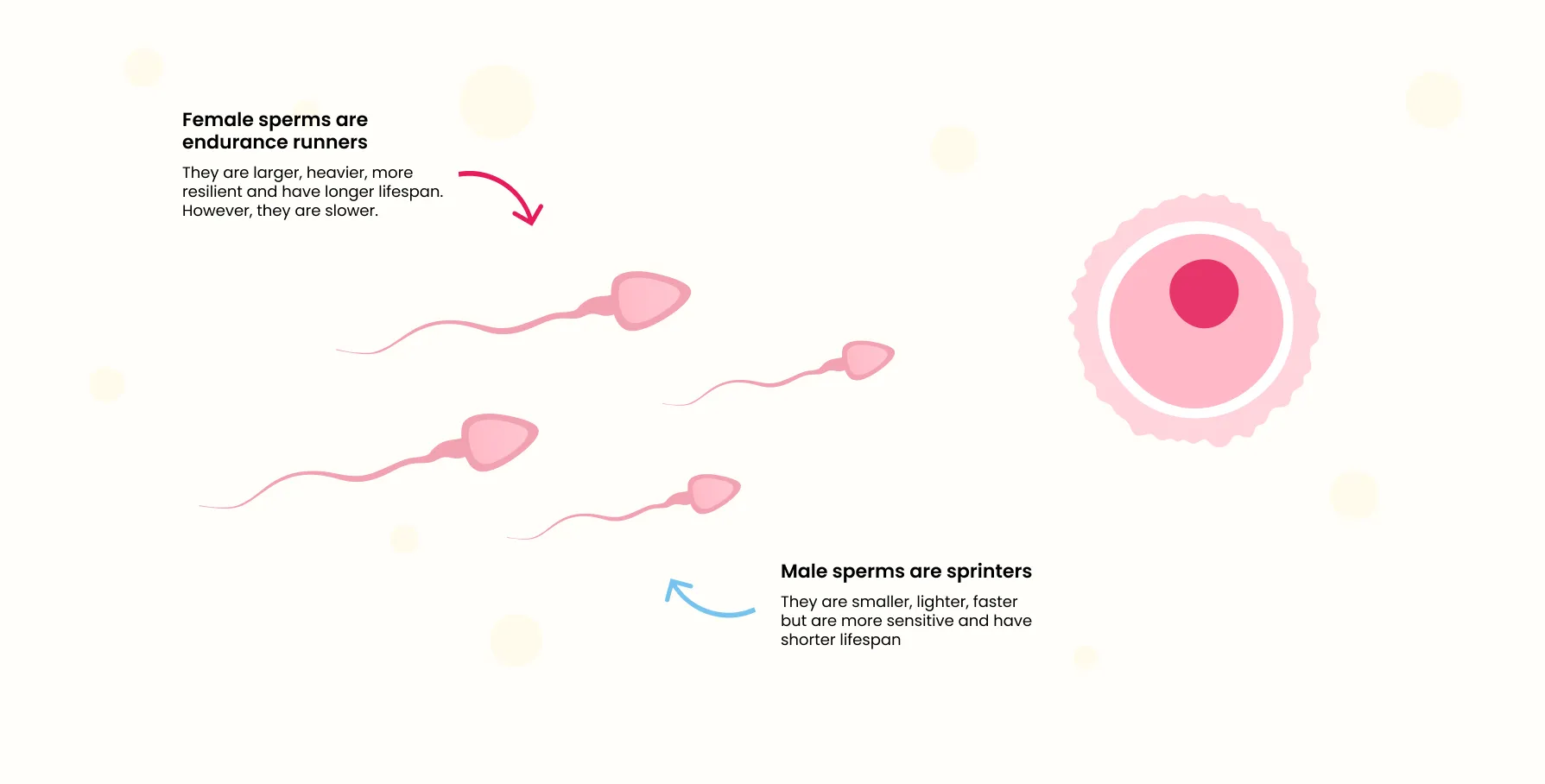What decides the gender of a baby?

The desire to influence the gender of a baby has intrigued people for centuries. From medical interventions like IVF with genetic testing to traditional “old wives’ tales” involving specific diets, positions, or even lunar cycles, humanity has explored countless ways to sway the odds. While some methods are based on science, others are rooted in cultural folklore, often with no proven effectiveness.
For those looking for natural yet evidence-based approaches, understanding how gender is determined at conception is key.
By focusing on the biological factors that influence whether a baby will be a boy or a girl, couples can make informed choices to gently sway the odds in their favor. Let’s dive into the science behind gender determination and how it works.
The Role of Chromosomes in Gender Determination
Human cells contain 46 chromosomes arranged in 23 pairs. Of these, one pair – the sex chromosomes – determines the biological gender of a baby.
- Egg cells: Always carry an X chromosome.
- Sperm cells: Carry either an X chromosome or a Y chromosome.
When a sperm with an X chromosome fertilizes the egg, the resulting combination (XX) produces a female baby. When a sperm with a Y chromosome fertilizes the egg, the combination (XY) produces a male baby.
Male vs. Female Sperm Characteristics
The gender of a baby is entirely dependent on which sperm - male (Y chromosome) or female (X chromosome) - reaches and fertilizes the egg first. Understanding the differences between these sperm types can shed light on the factors influencing gender determination:
- Male sperm (Y chromosome): Smaller, faster, but shorter-lived. They thrive in alkaline environments and are more likely to reach the egg when intercourse occurs close to ovulation.
- Female sperm (X chromosome): Larger, slower, but longer-lived. They perform better in acidic environments and can survive for several days, making intercourse earlier in the fertility window more favorable for conceiving a girl.

Factors Influencing Gender Determination
Several natural factors can influence which sperm is more likely to succeed in fertilizing the egg:
- Timing of intercourse: Having intercourse closer to ovulation favors male sperm, while earlier timing benefits female sperm.
- Reproductive environment: The pH levels of the vaginal and cervical environment can create conditions that either favor male or female sperm.
- Diet and lifestyle: Nutritional choices and overall health can subtly impact the reproductive environment, making it more or less favorable for a specific type of sperm.

How NATANEO Helps
For couples dreaming of influencing their baby’s gender, NATANEO provides a scientifically informed and structured approach to how to influence the sex of your future child in a natural way. The app doesn’t guarantee conception itself, but it does focus on increasing the chances of conceiving a boy or a girl through natural means.
NATANEO combines precise timing, tailored dietary plans, and supportive activities to create an optimal environment for the desired sperm to thrive. It guides couples step-by-step through the process, ensuring they are informed and empowered every step of the way. Whether you’re hoping for a son or a daughter, NATANEO offers a natural, non-invasive way to enhance your family planning journey.
Phrases to Keep in Mind:
- What decides the gender of a baby
- Male sperm (Y chromosome)
- Female sperm (X chromosome)
- How baby gender is determined
- Timing intercourse for gender
- Sperm and pH levels
- Alkaline vs. acidic environment for sperm
- Factors influencing baby gender
- Natural gender selection
- Personalized fertility plans with NATANEO